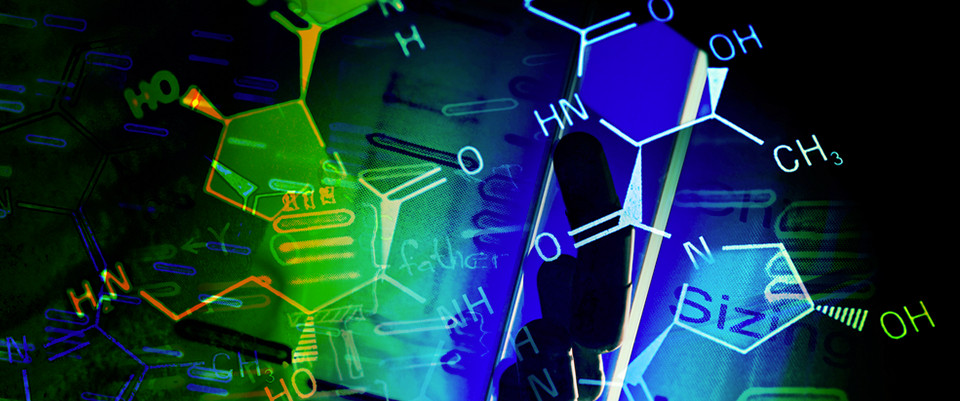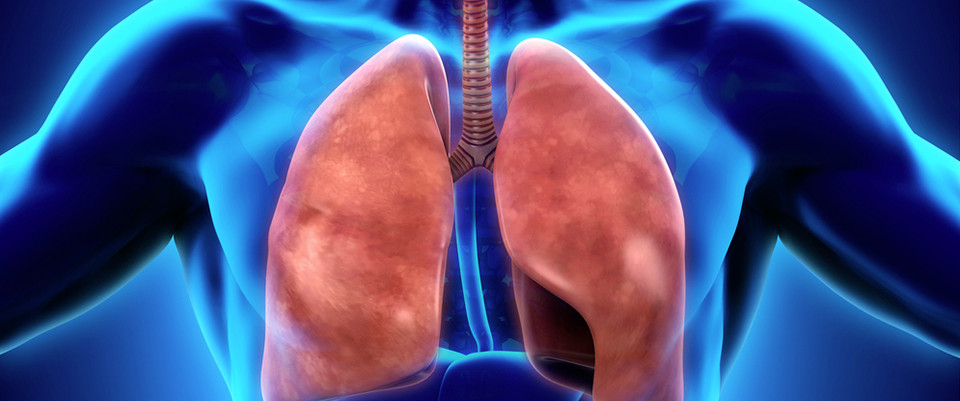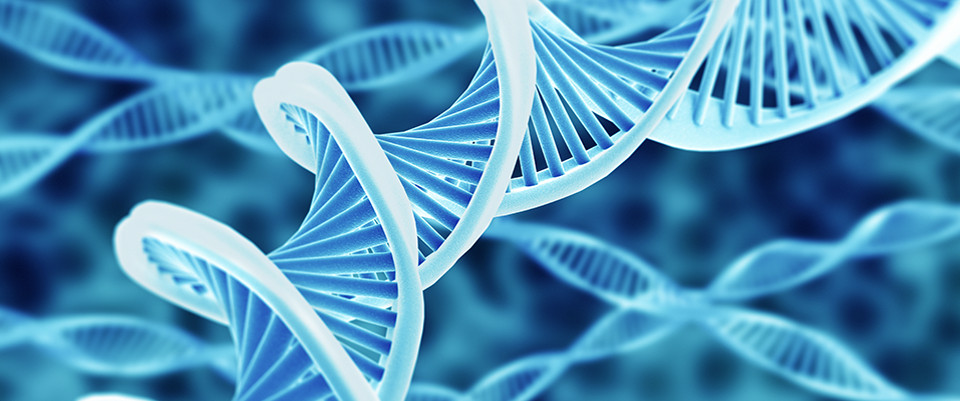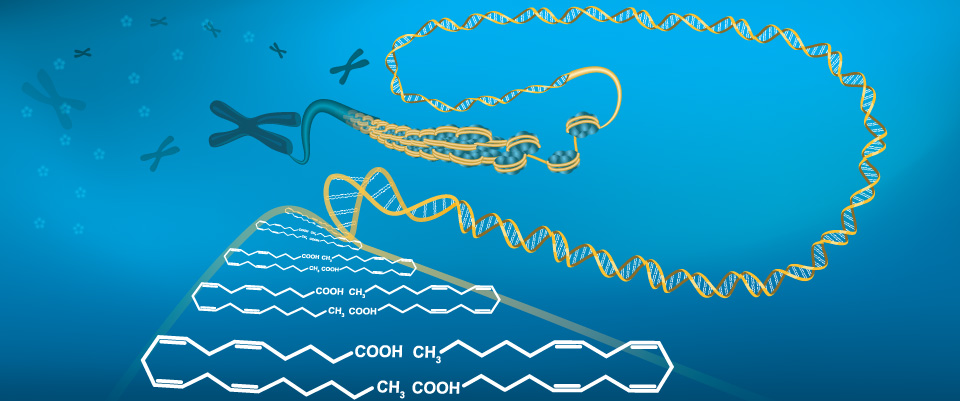PubMed
The lipid flippase SLC47A1 blocks metabolic vulnerability to ferroptosis
Nat Commun. 2022 Dec 27;13(1):7965. doi: 10.1038/s41467-022-35707-2.ABSTRACTFerroptosis is a type of regulated necrosis caused by unrestricted lipid peroxidation and subsequent plasma membrane rupture. However, the lipid remodeling mechanism that determines sensitivity to ferroptosis remains poorly understood. Here, we report a previously unrecognized role for the lipid flippase solute carrier family 47 member 1 (SLC47A1) as a regulator of lipid remodeling and survival during ferroptosis. Among 49 phospholipid scramblases, flippases, and floppases we analyzed, only SLC47A1 had mRNA that was selectively upregulated in multiple cancer cells exposed to ferroptotic inducers. Large-scale lipidomics and functional analyses revealed that the silencing of SLC47A1 increased RSL3- or erastin-induced ferroptosis by favoring ACSL4-SOAT1-mediated production of polyunsaturated fatty acid cholesterol esters. We identified peroxisome proliferator activated receptor alpha (PPARA) as a transcription factor that transactivates SLC47A1. The depletion of PPARA and SLC47A1 similarly sensitized cells to ferroptosis induction, whereas transfection-enforced re-expression of SLC47A1 restored resistance to ferroptosis in PPARA-deficient cells. Pharmacological or genetic blockade of the PPARA-SLC47A1 pathway increased the anticancer activity of a ferroptosis inducer in mice. These findings establish a direct molecular link between ferroptosis and lipid transporters, which may provide metabolic targets for overcoming drug resistance.PMID:36575162 | DOI:10.1038/s41467-022-35707-2
Lead optimization of aryl hydrocarbon receptor ligands for treatment of inflammatory skin disorders
Biochem Pharmacol. 2022 Dec 24:115400. doi: 10.1016/j.bcp.2022.115400. Online ahead of print.ABSTRACTTherapeutic aryl hydrocarbon receptor (AHR) modulating agents gained attention in dermatology as non-steroidal anti-inflammatory drugs that improve skin barrier properties. By exploiting AHR's known ligand promiscuity, we generated novel AHR modulating agents by lead optimization of a selective AHR modulator (SAhRM; SGA360). Twenty-two newly synthesized compounds were screened yielding two novel derivatives, SGA360f and SGA388, in which agonist activity led to enhanced keratinocyte terminal differentiation. SGA388 showed the highest agonist activity with potent normalization of keratinocyte hyperproliferation, restored expression of skin barrier proteins and dampening of chemokine expression by keratinocytes upon Th2-mediated inflammation in vitro. The topical application of SGA360f and SGA388 reduced acute skin inflammation in vivo by reducing cyclooxygenase levels, resulting in less neutrophilic dermal infiltrates. The minimal induction of cytochrome P450 enzyme activity, lack of cellular toxicity and mutagenicity classifies SGA360f and SGA388 as novel potential therapeutic AHR ligands and illustrates the potential of medicinal chemistry to fine-tune AHR signaling for the development of targeted therapies in dermatology and beyond.PMID:36574884 | DOI:10.1016/j.bcp.2022.115400
Temporal metabolic profiling of erythrocytes in mice infected with Babesia microti
Microb Pathog. 2022 Dec 24:105954. doi: 10.1016/j.micpath.2022.105954. Online ahead of print.ABSTRACTBACKGROUND: Babesiosis is an emerging zoonosis worldwide that is caused by tick-borne apicomplexans, Babesiaspp., which threatens the health of domesticated and wild mammals and even humans. Although it has done serious harm to animal husbandry and public health, the study of Babesia is still progressing slowly. Until now, no effective anti-Babesia vaccines have been available, and administration of combined drugs tends to produce side effects. Therefore, non-targeted metabolomics was employed in the present study to examine the temporal dynamic changes in the metabolic profile of the infected erythrocytes. The goal was to obtain new insight into pathogenesis of Babesia and to explore vaccine candidates or novel drug targets.METHODS: C57BL/6 mice were infected with B. microti and erythrocytes at different time points (0, 3, 6 d, 9, 12, and 22-days post-infection) were subjected to parasitemia surveillance and then metabolomics analysis using liquid chromatography-mass spectrometry (LC-MS). Multivariate statistical analyses were performed to clearly separate and identify dysregulated metabolites in Babesia-infected mice. The analyses included principal components analysis (PCA) and orthogonal partial least squares-discrimination analysis (OPLS-DA). The time-series trends of the impacted molecules were analyzed using the R package Mfuzz and the fuzzy clustering principle. The temporal profiling of amino acids, lipids, and nucleotides in blood cells infected with B. microti were also investigated.RESULTS: B. microti infection resulted in a fast increase of parasitemia and serious alteration of the mouse metabolites. Through LC-MS metabolomics analysis, 10,289 substance peaks were detected and annotated to 3,705 components during the analysis period. There were 1,166 dysregulated metabolites, which were classified into 8 clusters according to the temporal trends. Consistent with the trend of parasitemia, the numbers of differential metabolites reached a peak of 525 at 6-days post-infection. Moreover, the central carbon metabolism in cancer demonstrated the most serious change during the infection process except for that observed at 6 dpi. Sabotage occurred in components involved in the TCA cycle, amino acids, lipids, and nucleotide metabolism.CONCLUSION: Our findings revealed a great alteration in the metabolites of Babesia-infected mice and shed new light on the pathogenesis of B. microti at the metabolic level. The results might lead to novel information about the mechanisms of pathopoiesis, babesisosis, and anti-parasite drug/vaccine development in the future.PMID:36574865 | DOI:10.1016/j.micpath.2022.105954
Untangling Determinants of gut microbiota and tumor immunologic status through a multi-omics approach in colorectal cancer
Pharmacol Res. 2022 Dec 24:106633. doi: 10.1016/j.phrs.2022.106633. Online ahead of print.ABSTRACTThe changes in gut microbiota have been implicated in colorectal cancer (CRC). The interplays between the host and gut microbiota remain largely unclear, and few studies have investigated these interplays using integrative multi-omics data. In this study, large-scale multi-comic datasets, including microbiome, metabolome, bulk transcriptomics and single cell RNA sequencing of CRC patients, were analyzed individually and integrated through advanced bioinformatics methods. We further examined the clinical relevance of these findings in the mice recolonized with microbiota from human. We found that CRC patients had distinct microbiota compositions compared to healthy controls. A machine-learning model was developed with 28 biomarkers for detection of CRC, which had high accuracy and clinical applicability. We identified multiple significant correlations between genera and well-characterized genes, suggesting the potential role of gut microbiota in tumor immunity. Further analysis showed that specific metabolites worked as profound communicators between these genera and tumor immunity. Integrating microbiota and metabolome perspectives, we catalogued gut taxonomic and metabolomic features that represented the key multi-omics signature of CRC. Furthermore, gut microbiota from CRC patients transplanted to compromise the response of CRC to immunotherapy. These phenotypes were strongly associated with the alterations in gut microbiota, immune cell infiltration as well as multiple metabolic pathways. The comprehensive interplays across multi-comic data of CRC might explain how gut microbiota influenced tumor immunity. Hence, we proposed that modifying the CRC microbiota using healthy donors might serve as a promising strategy to improve response to immunotherapy.PMID:36574857 | DOI:10.1016/j.phrs.2022.106633
Integrating serum pharmacochemistry and metabolomics to study the combination mechanisms of Bupleurum chinense DC and Paeonia lactiflora pall for treating depression
J Ethnopharmacol. 2022 Dec 24:116068. doi: 10.1016/j.jep.2022.116068. Online ahead of print.ABSTRACTETHNOPHARMACOLOGICAL RELEVANCE: Bupleurum chinense DC-Paeonia lactiflora Pall (BCD-PLP) is a common clinical herb pair in traditional Chinese medicine (TCM) prescriptions commonly used to treat depression. However, its combination mechanisms with its anti-depressive effects remain highly unclear.AIM OF THE STUDY: Here, an effective strategy has been developed to study the combination mechanisms of Bupleurum chinense DC (BCD) and Paeonia lactiflora Pall (PLP) by integrating serum pharmacochemistry analysis, metabolomics technology, and molecular docking technology.MATERIALS AND METHODS: First, the depression model rats were replicated by the chronic unpredictable mild stress (CUMS) procedure, and the difference in the chemical composition in vivo before and after the combination of BCD and PLP was analyzed by integrating background subtraction and multivariate statistical analysis techniques. Then, UPLC/HRMS-based serum metabolomics was performed to analyze the synergistic effect on metabolite regulation before and after the combination of BCD and PLP. Further, the correlation analysis between the differential exogenous chemical components and the differential endogenous metabolites before and after the combination was employed to dissect the combination mechanisms from a global perspective of combining metabolomics and serum pharmacochemistry. Finally, the molecular docking between the differential chemical components and the key metabolic enzymes was applied to verify the regulatory effect of the differential exogenous chemical components on the differential endogenous metabolites.RESULTS: The serum pharmacochemistry analysis results demonstrated that the combination of BCD and PLP could significantly affect the content of 10 components in BCD (including 5 prototype components were significantly decreased and 5 metabolites were significantly increased) and 8 components in PLP (including 4 prototype components and 3 metabolites were significantly increased, 1 metabolite was significantly decreased), which indicated that the combination could enhance BCD prototype components' metabolism and the absorption of the PLP prototype components. Besides, metabolomics results indicated that the BCD-PLP herb pair group significantly reversed more metabolites (8) than BCD and PLP single herb group (5 & 4) and has a stronger regulatory effect on metabolite disorders caused by CUMS. Furthermore, the correlation analysis results suggested that saikogenin F and saikogenin G were significantly positively correlated with the endogenous metabolite itaconate, an endogenous anti-inflammatory metabolite; and benzoic acid was significantly positively correlated with D-serine, an endogenous metabolite with an antidepressant effect. Finally, the molecular docking results further confirmed that the combination of BCD and PLP could affect the activities of cis-aconitic acid decarboxylase and D-amino acid oxidase by increasing the in vivo concentration of saikogenin F and benzoic acid, which further enhances its anti-inflammatory activity and anti-depressive effect.CONCLUSIONS: In this study, an effective strategy has been developed to study the combination mechanisms of BCD and PLP by integrating serum pharmacochemistry analysis, multivariate statistical analysis, metabolomics technology, and molecular docking technology. Based on this strategy, the present study indicated that the combination of BCD and PLP could affect the activities of cis-aconitic acid decarboxylase and D-amino acid oxidase by increasing the concentration of saikogenin F and benzoic acid in vivo, which further enhances its anti-depressive effect. In short, this strategy will provide a reliable method for elucidating the herb-herb compatibility mechanism of TCM.PMID:36574791 | DOI:10.1016/j.jep.2022.116068
Biochemical metabolomic profiling of the Crown-of-Thorns Starfish (Acanthaster): New insight into its biology for improved pest management
Sci Total Environ. 2022 Nov 26:160525. doi: 10.1016/j.scitotenv.2022.160525. Online ahead of print.ABSTRACTThe Crown-of-Thorns Starfish (COTS), Acanthaster species, is a voracious coral predator that destroys coral reefs when in outbreak status. The baseline metabolite and lipid biomolecules of 10 COTS tissues, including eggs from gravid females, were investigated in this study to provide insight into their biology and identify avenues for control. Targeted and untargeted metabolite- and lipidomics-based mass spectrometry approaches were used to obtain tissue-specific metabolite and lipid profiles. Across all COTS tissues, 410 metabolites and 367 lipids were identified. Most abundant were amino acids and peptides (18.7 %) and wax esters (17 %). There were 262 metabolites and 192 lipids identified in COTS eggs. Wax esters were more abundant in the eggs (30 %) followed by triacylglycerols (TG), amino acids, and peptides. The diversity of asterosaponins in eggs (34) was higher than in tissues (2). Several asterosaponins known to modulate sperm acrosome reaction were putatively identified, including glycoside B, asterosaponin-4 (Co-Aris III), and regularoside B (asterosaponin A). The saponins saponin A, thornasteroside A, hillaside B, and non-saponins dictyol J and axinellamine B which have been shown to possess defensive properties, were found in abundance in gonads, skin, and radial nerve tissues. Inosine and 2-hexyldecanoic acid are the most abundant metabolites in tissues and eggs. As a secondary metabolite of purine degradation, inosine plays an important role in purine biosynthesis, while 2-hexyldecanoic acid is known to suppress side-chain crystallization during the synthesis of amphiphilic macromolecules (i.e., phospholipids). These significant spatial changes in metabolite, lipid, and asterosaponin profiles enabled unique insights into key biological tissue-specific processes that could be manipulated to better control COTS populations. Our findings highlight COTS as a novel source of molecules with therapeutic and cosmetic properties (ceramides, sphingolipids, carnosine, and inosine). These outcomes will be highly relevant for the development of strategies for COTS management including chemotaxis-based biocontrol and exploitation of COTS carcasses for the extraction of commercial molecules.PMID:36574554 | DOI:10.1016/j.scitotenv.2022.160525
Untargeted metabolomics and lipidomics identified four subtypes of small cell lung cancer
Metabolomics. 2022 Dec 27;19(1):3. doi: 10.1007/s11306-022-01964-x.ABSTRACTINTRODUCTION: Small cell lung cancer (SCLC) is a heterogeneous malignancy with dismal prognosis. However, few studies have conducted on the metabolic heterogeneity in SCLC.OBJECTIVE: We therefore identify SCLC classifications using untargeted metabolomics and lipidomics. We also compared their survival and the immunotherapy responses.METHODS: Liquid Chromatography-Mass Spectrometry/Mass Spectrometry (LC-MS/MS) analysis was performed in 191 SCLC serum samples. Kyoto Encyclopedia of Genes and Genomes (KEGG) analysis was conducted to identify metabolic pathways. The Kaplan-Meier and log-rank test were used to analyze the survival curves. The univariate and multivariate Cox proportional hazards regression models were used to evaluate prognostic factors for OS in patients with SCLC.RESULTS: Distinct subtypes of SCLC were identified by consensus clustering algorithm using partioning around medoids (pam) based on untargeted metabolomics and lipidomics. Four distinct subtypes of SCLC were identified, with distinct metabolic pathways. Subgroup 2 had the longest survival whereas Subgroup 1 had the shortest. Subtype 2 benefited most from immunotherapy in OS, as in contrast to Subtype 3 with shortest survival.CONCLUSION: Our study revealed the metabolic heterogeneity in SCLC and identified four subtypes with distinct metabolic features. It indicates promising therapeutic and prognostic value that may guide treatment for SCLC. The subtype-specific clinical trials may be designed and would be instructive for drug development.PMID:36574156 | DOI:10.1007/s11306-022-01964-x
Untargeted Metabolomic Analysis Reveals the Metabolic Disturbances and Exacerbation of Oxidative Stress in the Cerebral Cortex of a BTBR Mouse Model of Autism
J Mol Neurosci. 2022 Dec 27. doi: 10.1007/s12031-022-02096-6. Online ahead of print.ABSTRACTThe etiology and pathology of autism spectrum disorders (ASDs) are still poorly understood, which largely limit the treatment and diagnosis of ASDs. Emerging evidence supports that abnormal metabolites in the cerebral cortex of a BTBR mouse model of autism are involved in the pathogenesis of autism. However, systematic study on global metabolites in the cerebral cortex of BTBR mice has not been conducted. The current study aims to characterize metabolic changes in the cerebral cortex of BTBR mice by using an untargeted metabolomic approach based on UPLC-Q-TOF/MS. C57BL/6 J mice were used as a control group. A total of 14 differential metabolites were identified. Compared with the control group, the intensities of PI(16:0/22:5(4Z,7Z,10Z,13Z,16Z)), PC(22:6(4Z,7Z,10Z,13Z,16Z,19Z)/18:1(9Z)), PA(16:0/18:1(11Z)), 17-beta-estradiol-3-glucuronide, and N6,N6,N6-trimethyl-L-lysine decreased significantly (p < 0.01) and the intensities of 2-oxo-4-hydroxy-4-carboxy-5-ureidoimidazoline, LysoPC(20:4(5Z,8Z,11Z,14Z)/0:0), adenosine monophosphate, adenosine-5'-phosphosulfate, LacCer(d18:1/12:0),3-dehydro-L-gulonate, N-(1-deoxy-1-fructosyl)tryptophan, homovanillic acid, and LPA(0:0/18:1(9Z)) increased significantly (p < 0.01) in the BTBR group. These changes in metabolites were closely related to perturbations in lipid metabolism, energy metabolism, purine metabolism, sulfur metabolism, amino acid metabolism, and carnitine biosynthesis. Notably, exacerbation of the oxidative stress response caused by differential prooxidant metabolites led to alteration of antioxidative systems in the cerebral cortex and resulted in mitochondrial dysfunction, further leading to abnormal energy metabolism as an etiological mechanism of autism. A central role of abnormal metabolites in neurological functions associated with behavioral outcomes and disturbance of sulfur metabolism and carnitine biosynthesis were found in the cerebral cortex of BTBR mice, which helped increase our understanding for exploring the pathological mechanism of autism.PMID:36574152 | DOI:10.1007/s12031-022-02096-6
Despite similar clinical features metabolomics reveals distinct signatures in insulin resistant and progressively obese minipigs
J Physiol Biochem. 2022 Dec 27. doi: 10.1007/s13105-022-00940-2. Online ahead of print.ABSTRACTObesity is a major contributor to the silent and progressive development of type 2 diabetes (T2D) whose prevention could be improved if individuals at risk were identified earlier. Our aim is to identify early phenotypes that precede T2D in diet-induced obese minipigs. We fed four groups of minipigs (n = 5-10) either normal-fat or high-fat high-sugar diet during 2, 4, or 6 months. Morphometric features were recorded, and metabolomics and clinical parameters were assessed on fasting plasma samples. Multivariate statistical analysis on 46 morphometrical and clinical parameters allowed to differentiate 4 distinct phenotypes: NFC (control group) and three others (HF2M, HF4M, HF6M) corresponding to the different stages of the obesity progression. Compared to NFC, we observed a rapid progression of body weight and fat mass (4-, 7-, and tenfold) in obese phenotypes. Insulin resistance (IR; 2.5-fold increase of HOMA-IR) and mild dyslipidemia (1.2- and twofold increase in total cholesterol and HDL) were already present in the HF2M and remained stable in HF4M and HF6M. Plasma metabolome revealed subtle changes of 23 metabolites among the obese groups, including a progressive switch in energy metabolism from amino acids to lipids, and a transient increase in de novo lipogenesis and TCA-related metabolites in HF2M. Low anti-oxidative capacities and anti-inflammatory response metabolites were found in the HF4M, and a perturbed hexose metabolism was observed in HF6M. Overall, we show that IR and progressively obese minipigs reveal phenotype-specific metabolomic signatures for which some of the identified metabolites could be considered as potential biomarkers of early progression to TD2.PMID:36574151 | DOI:10.1007/s13105-022-00940-2
Transcriptomic and Metabolomic Analysis of Soybean Nodule Number Improvements with the Use of Water-Soluble Humic Materials
J Agric Food Chem. 2022 Dec 27. doi: 10.1021/acs.jafc.2c06200. Online ahead of print.ABSTRACTWater-soluble humic materials (WSHMs) can enhance the nodule numbers of soybean plants. In this study, targeted metabolomics and transcriptomics were used to understand this mechanism. Results showed that 500 mg/L WSHM increased the adsorption and colonization of rhizobia in soybean roots. High-performance liquid chromatography and targeted metabolomics showed that WSHMs could regulate the content and distribution of endogenous hormones of soybean plants at the initial stage of soybean nodulation. Transcriptomic analysis showed a total of 2406 differentially expressed genes (DEGs) by the 25th day, accounting for 4.89% of total annotation genes (49159). These DEGs were found to contribute primarily to the MAPK signaling pathway, glycolysis/gluconeogenesis, and plant hormone signal transduction according to the -log 10 (Padjust) value in the KEGG pathway. Subsequently, DEGs related to these hormones were selected for verification using quantity-PCR. The WSHM increased the number of nodules by regulating the expression of endogenous hormones in soybean plants.PMID:36573896 | DOI:10.1021/acs.jafc.2c06200
Advances in Physiological, Transcriptomic, Proteomic, Metabolomic, and Molecular Genetic Approaches for Enhancing Mango Fruit Quality
J Agric Food Chem. 2022 Dec 27. doi: 10.1021/acs.jafc.2c05958. Online ahead of print.ABSTRACTMango (Mangifera indica L.) is a nutritionally important fruit of high nutritive value, delicious in taste with an attractive aroma. Due to their antioxidant and therapeutic potential, mango fruits are receiving special attention in biochemical and pharmacognosy-based studies. Fruit quality determines consumer's acceptance, and hence, understanding the physiological, biochemical, and molecular basis of fruit development, maturity, ripening, and storage is essential. Transcriptomic, metabolomic, proteomic, and molecular genetic approaches have led to the identification of key genes, metabolites, protein candidates, and quantitative trait loci that are associated with enhanced mango fruit quality. The major pathways that determine the fruit quality include amino acid metabolism, plant hormone signaling, carbohydrate metabolism and transport, cell wall biosynthesis and degradation, flavonoid and anthocyanin biosynthesis, and carotenoid metabolism. Expression of the polygalacturonase, cutin synthase, pectin methyl esterase, pectate lyase, β-galactosidase, and ethylene biosynthesis enzymes are related to mango fruit ripening, flavor, firmness, softening, and other quality processes, while genes involved in the MAPK signaling pathway, heat shock proteins, hormone signaling, and phenylpropanoid biosynthesis are associated with diseases. Metabolomics identified volatiles, organic acids, amino acids, and various other compounds that determine the characteristic flavor and aroma of the mango fruit. Molecular markers differentiate the mango cultivars based on their geographical origins. Genetic linkage maps and quantitative trait loci studies identified regions in the genome that are associated with economically important traits. The review summarizes the applications of omics techniques and their potential applications toward understanding mango fruit physiology and their usefulness in future mango breeding.PMID:36573879 | DOI:10.1021/acs.jafc.2c05958
Exogenous antibiotic resistance gene contributes to intestinal inflammation by modulating the gut microbiome and inflammatory cytokine responses in mouse
Gut Microbes. 2023 Jan-Dec;15(1):2156764. doi: 10.1080/19490976.2022.2156764.ABSTRACTDysregulation of the gut microbiota by environmental factors is associated with a variety of autoimmune and immune-mediated diseases. In addition, naturally-occurring extracellular antibiotic resistance genes (eARGs) might directly enter the gut via the food chain. However, following gut microbiota exposure to eARGs, the ecological processes shaping the microbiota community assembly, as well as the interplay between the microbiota composition, metabolic function, and the immune responses, are not well understood. Increasing focus on the One Health approach has led to an urgent need to investigate the direct health damage caused by eARGs. Herein, we reveal the significant influence of eARGs on microbiota communities, strongly driven by stochastic processes. How eARGs-stimulate variations in the composition and metabolomic function of the gut microbiota led to cytokine responses in mice of different age and sex were investigated. The results revealed that cytokines were significantly associated with immunomodulatory microbes, metabolites, and ARGs biomarkers. Cytokine production was associated with specific metabolic pathways (arachidonic acid and tryptophan metabolic pathways), as confirmed by ex vivo cytokine responses and recovery experiments in vivo. Furthermore, the gut microbial profile could be applied to accurately predict the degree of intestinal inflammation ascribed to the eARGs (area under the curve = 0.9616). The present study provided a comprehensive understanding of the influence of an eARGs on immune responses and intestinal barrier damage, shedding light on the interplay between eARGs, microbial, metabolites, and the gut antibiotic resistome in modulating the human immune system.PMID:36573825 | DOI:10.1080/19490976.2022.2156764
<em>GlPS1</em> overexpression accumulates coumarin secondary metabolites in transgenic <em>Arabidopsis</em>
Plant Cell Tissue Organ Cult. 2022 Dec 21:1-15. doi: 10.1007/s11240-022-02427-w. Online ahead of print.ABSTRACTThe dried root of Glehnia littoralis is a traditional Chinese herbal medicine mainly used to treat lung diseases and plays an important role in fighting coronavirus disease 2019 pneumonia in China. This study focused on the key enzyme gene GlPS1 for furanocoumarin synthesis in G. littoralis. In the 35S:GlPS1 transgenic Arabidopsis study, the Arabidopsis thaliana-overexpressing GlPS1 gene was more salt-tolerant than Arabidopsis in the blank group. Metabolomics analysis showed 30 differential metabolites in Arabidopsis, which overexpressed the GlPS1 gene. Twelve coumarin compounds were significantly upregulated, and six of these coumarin compounds were not detected in the blank group. Among these differential coumarin metabolites, isopimpinellin and aesculetin have been annotated by the Kyoto Encyclopedia of Genes and Genomes and isopimpinellin was not detected in the blank group. Through structural comparison, imperatorin was formed by dehydration and condensation of zanthotoxol and a molecule of isoprenol, and the difference between them was only one isoprene. Results showed that the GlPS1 gene positively regulated the synthesis of coumarin metabolites in A. thaliana and at the same time improved the salt tolerance of A. thaliana.SUPPLEMENTARY INFORMATION: The online version contains supplementary material available at 10.1007/s11240-022-02427-w.PMID:36573085 | PMC:PMC9770567 | DOI:10.1007/s11240-022-02427-w
ApoJ/Clusterin concentrations are determinants of cerebrospinal fluid cholesterol efflux capacity and reduced levels are associated with Alzheimer's disease
Alzheimers Res Ther. 2022 Dec 26;14(1):194. doi: 10.1186/s13195-022-01119-z.ABSTRACTBACKGROUND: Alzheimer's disease (AD) shares risk factors with cardiovascular disease (CVD) and dysregulated cholesterol metabolism is a mechanism common to both diseases. Cholesterol efflux capacity (CEC) is an ex vivo metric of plasma high-density lipoprotein (HDL) function and inversely predicts incident CVD independently of other risk factors. Cholesterol pools in the central nervous system (CNS) are largely separate from those in blood, and CNS cholesterol excess may promote neurodegeneration. CEC of cerebrospinal fluid (CSF) may be a useful measure of CNS cholesterol trafficking. We hypothesized that subjects with AD and mild cognitive impairment (MCI) would have reduced CSF CEC compared with Cognitively Normal (CN) and that CSF apolipoproteins apoA-I, apoJ, and apoE might have associations with CSF CEC.METHODS: We retrieved CSF and same-day ethylenediaminetetraacetic acid (EDTA) plasma from 108 subjects (40 AD; 18 MCI; and 50 CN) from the Center for Neurodegenerative Disease Research biobank at the Perelman School of Medicine, University of Pennsylvania. For CSF CEC assays, we used N9 mouse microglial cells and SH-SY5Y human neuroblastoma cells, and the corresponding plasma assay used J774 cells. Cells were labeled with [3H]-cholesterol for 24 h, had ABCA1 expression upregulated for 6 h, were exposed to 33 μl of CSF, and then were incubated for 2.5 h. CEC was quantified as percent [3H]-cholesterol counts in medium of total counts medium+cells, normalized to a pool sample. ApoA-I, ApoJ, ApoE, and cholesterol were also measured in CSF.RESULTS: We found that CSF CEC was significantly lower in MCI compared with controls and was poorly correlated with plasma CEC. CSF levels of ApoJ/Clusterin were also significantly lower in MCI and were significantly associated with CSF CEC. While CSF ApoA-I was also associated with CSF CEC, CSF ApoE had no association with CSF CEC. CSF CEC is significantly and positively associated with CSF Aβ. Taken together, ApoJ/Clusterin may be an important determinant of CSF CEC, which in turn could mitigate risk of MCI and AD risk by promoting cellular efflux of cholesterol or other lipids. In contrast, CSF ApoE does not appear to play a role in determining CSF CEC.PMID:36572909 | PMC:PMC9791777 | DOI:10.1186/s13195-022-01119-z
Divergent impacts on the gut microbiome and host metabolism induced by traditional Chinese Medicine with Cold or Hot properties in mice
Chin Med. 2022 Dec 26;17(1):144. doi: 10.1186/s13020-022-00697-2.ABSTRACTBACKGROUND: Traditional Chinese Medicine (TCM) has been practiced and developed in China over thousands of years under the guidance of a series of complicated traditional theories. Herbs within TCM usually are classified according to their different properties ranging from cold, cool, warm to hot, which are simplified as Cold and Hot properties. TCM with either Cold or Hot properties are used in various formulae designed for the purpose of restoring the balance of patients. Emerging evidence has highlighted that an altered gut microbiota or host metabolism are critically involved in affecting the healing properties of TCM. However, at present the exact influences and crosstalk on the gut microbiota and host metabolism remain poorly understood.METHODS: In the present study, the divergent impacts of six TCMs with either Cold or Hot properties on gut microbiome and host metabolism during short- or long-term intervention in mice were investigated. Six typical TCMs with Hot or Cold properties including Cinnamomi Cortex (rougui, RG), Zingiberis Rhizoma (ganjiang, GJ), Aconiti Lateralis Radix Praeparata (fuzi, FZ), Rhei Radix et Rhizoma (dahuang, DH), Scutellariae Radix (huangqin, HQ), and Copitdis Rhizoma (huanglian, HL) were selected and orally administered to male C57BL/6J mice for a short- or a long-term (7 or 35 days). At the end of experiments, serum and cecal contents were collected for metabolomic and gut microbiome analyses using gas chromatography-tandem mass spectrometry (GC-MS) or 16S ribosomal deoxyribonucleic acid (16S rDNA) sequencing.RESULTS: The results revealed that the gut microbiome underwent divergent changes both in its composition and functions after short-term intervention with TCM possessing either Cold or Hot properties. Interestingly, the number of changed genus and bacteria pathways was reduced in Hot_LT, but was increased in Cold_LT, especially in the HL group. Increased α diversity and a reduced F/B ratio revealed the changes in Hot_ST, but a reduced Shannon index and increased altered bacteria function was evident in Cold_LT. The serum metabolic profile showed that the influence of TCM on host metabolism was gradually reduced over time. Glycolipid metabolism related pathways were specifically regulated by Hot_ST, but also surprisingly by Cold_LT. Reduced lactic acid in Cold_ST, increased tryptophan concentrations and decreased proline and threonine concentrations in Cold_LT perhaps highlighting the difference between the two natures influence on serum metabolism. These metabolites were closely correlated with altered gut microbiota shown by further correlation analyses.CONCLUSION: The results indicated that TCM properties could be, at least partially characterized by an alteration in the gut microbiota and metabolic profile, implying that the divergent responses of gut microbiome and host metabolism are involved in different responses to TCM.PMID:36572936 | DOI:10.1186/s13020-022-00697-2
LC-MS/MS based metabolomics and proteomics reveal candidate biomarkers and molecular mechanism of early IgA nephropathy
Clin Proteomics. 2022 Dec 27;19(1):51. doi: 10.1186/s12014-022-09387-5.ABSTRACTBACKGROUND: Immunoglobulin A nephropathy (IgAN), a globally common primary chronic glomerulopathy, is one of the leading causes of end-stage renal disease. However, the underlying mechanisms of IgAN have yet to be demonstrated. There were no adequate and reliable plasma biomarkers for clinical diagnosis, especially at the early stage. In the present study, integrative proteomics and metabolomics were aimed at exploring the mechanism of IgAN and identifying potential biomarkers.METHODS: Plasma from IgAN and healthy individuals were collected and analyzed in a randomized controlled manner. Data-independent acquisition quantification proteomics and mass spectrometry based untargeted metabolomics techniques were used to profile the differentially expressed proteins (DEPs) and differentially abundant metabolites (DAMs) between two groups and identify potential biomarkers for IgAN from health at the early stage. Disease-related pathways were screened out by clustering and function enrichment analyses of DEPs and DAMs. And the potential biomarkers for IgAN were identified through the machine learning approach. Additionally, an independent cohort was used to validate the priority candidates by enzyme-linked immunosorbent assay (ELISA).RESULTS: Proteomic and metabolomic analyses of IgAN plasma showed that the complement and the immune system were activated, while the energy and amino acid metabolism were disordered in the IgAN patients. PRKAR2A, IL6ST, SOS1, and palmitoleic acid have been identified as potential biomarkers. Based on the AUC value for the training and test sets, the classification performance was 0.994 and 0.977, respectively. The AUC of the external validation of the four biomarkers was 0.91.CONCLUSION: In this study, we combined proteomics and metabolomics techniques to analyze the plasma of IgAN patients and healthy individuals, constructing a biomarker panel, which could provide new insights and provide potential novel molecular diagnoses for IgAN.PMID:36572849 | DOI:10.1186/s12014-022-09387-5
Integrated metabolomics and transcriptomics analysis of roots of Bupleurum chinense and B. scorzonerifolium, two sources of medicinal Chaihu
Sci Rep. 2022 Dec 26;12(1):22335. doi: 10.1038/s41598-022-27019-8.ABSTRACTRadix Bupleuri (Chaihu in Chinese) is a traditional Chinese medicine commonly used to treat colds and fevers. The root metabolome and transcriptome of two cultivars of B. chinense (BCYC and BCZC) and one of B. scorzonerifolium (BSHC) were determined and analyzed. Compared with BSHC, 135 and 194 differential metabolites were identified in BCYC and BCZC, respectively, which were mainly fatty acyls, organooxygen metabolites. A total of 163 differential metabolites were obtained between BCYC and BCZC, including phenolic acids and lipids. Compared with BSHC, 6557 and 5621 differential expression genes (DEGs) were found in BCYC and BSHC, respectively, which were annotated into biosynthesis of unsaturated fatty acid and fatty acid metabolism. A total of 4,880 DEGs existed between the two cultivars of B. chinense. The abundance of flavonoids in B. scorzonerifolium was higher than that of B. chinense, with the latter having higher saikosaponin A and saikosaponin D than the former. Pinobanksin was the most major flavonoid which differ between the two cultivars of B. chinense. The expression of chalcone synthase gene was dramatically differential, which had a positive correlation with the biosynthesis of pinobanksin. The present study laid a foundation for further research on biosynthesis of flavonoids and terpenoids of Bupleurum L.PMID:36572795 | DOI:10.1038/s41598-022-27019-8
Perioral secretions enable complex social signaling in African mole-rats (genus Fukomys)
Sci Rep. 2022 Dec 26;12(1):22366. doi: 10.1038/s41598-022-26351-3.ABSTRACTSubterranean common mole-rats of the genus Fukomys (family Bathyergidae) live in large, cooperatively-breeding families. Odor cues have been hypothesized to play an important role in mediating social behaviors in the underground ecotope, but only little is known about the role of olfactory signaling in burrowing mammals. Here we characterize the so far neglected perioral glands of Fukomys and other African mole-rats as an important source of olfactory social information. Histology demonstrates these structures to be derived sebaceous glands that are developed regardless of sex and reproductive status. However, gland activity is higher in Fukomys males, leading to sexually dimorphic patterns of stain and clotting of the facial pelage. Behavioral assays revealed that conspecifics prefer male but not female perioral swabs over scent samples from the back fur and that male sebum causes similar attraction as anogenital scent, a known source of social information in Fukomys. Finally, we assessed volatile compounds in the perioral sebum of the giant mole-rat (Fukomys mechowii) via GCxGC-MS-based metabolomic profiling. Volatiles display pronounced sex-specific signatures but also allow to differentiate between intrasexual reproductive status groups. These different lines of evidence suggest that mole-rat perioral glands provide complex odor signals which play a crucial role in social communication.PMID:36572727 | DOI:10.1038/s41598-022-26351-3
Mixed heavy metal stress induces global iron starvation response
ISME J. 2022 Dec 26. doi: 10.1038/s41396-022-01351-3. Online ahead of print.ABSTRACTMultiple heavy metal contamination is an increasingly common global problem. Heavy metals have the potential to disrupt microbially mediated biogeochemical cycling. However, systems-level studies on the effects of combinations of heavy metals on bacteria are lacking. For this study, we focused on the Oak Ridge Reservation (ORR; Oak Ridge, TN, USA) subsurface which is contaminated with several heavy metals and high concentrations of nitrate. Using a native Bacillus cereus isolate that represents a dominant species at this site, we assessed the combined impact of eight metal contaminants, all at site-relevant concentrations, on cell processes through an integrated multi-omics approach that included discovery proteomics, targeted metabolomics, and targeted gene-expression profiling. The combination of eight metals impacted cell physiology in a manner that could not have been predicted from summing phenotypic responses to the individual metals. Exposure to the metal mixture elicited a global iron starvation response not observed during individual metal exposures. This disruption of iron homeostasis resulted in decreased activity of the iron-cofactor-containing nitrate and nitrite reductases, both of which are important in biological nitrate removal at the site. We propose that the combinatorial effects of simultaneous exposure to multiple heavy metals is an underappreciated yet significant form of cell stress in the environment with the potential to disrupt global nutrient cycles and to impede bioremediation efforts at mixed waste sites. Our work underscores the need to shift from single- to multi-metal studies for assessing and predicting the impacts of complex contaminants on microbial systems.PMID:36572723 | DOI:10.1038/s41396-022-01351-3
Comprehensive investigation of pathway enrichment methods for functional interpretation of LC-MS global metabolomics data
Brief Bioinform. 2022 Dec 26:bbac553. doi: 10.1093/bib/bbac553. Online ahead of print.ABSTRACTBACKGROUND: Global or untargeted metabolomics is widely used to comprehensively investigate metabolic profiles under various pathophysiological conditions such as inflammations, infections, responses to exposures or interactions with microbial communities. However, biological interpretation of global metabolomics data remains a daunting task. Recent years have seen growing applications of pathway enrichment analysis based on putative annotations of liquid chromatography coupled with mass spectrometry (LC-MS) peaks for functional interpretation of LC-MS-based global metabolomics data. However, due to intricate peak-metabolite and metabolite-pathway relationships, considerable variations are observed among results obtained using different approaches. There is an urgent need to benchmark these approaches to inform the best practices.RESULTS: We have conducted a benchmark study of common peak annotation approaches and pathway enrichment methods in current metabolomics studies. Representative approaches, including three peak annotation methods and four enrichment methods, were selected and benchmarked under different scenarios. Based on the results, we have provided a set of recommendations regarding peak annotation, ranking metrics and feature selection. The overall better performance was obtained for the mummichog approach. We have observed that a ~30% annotation rate is sufficient to achieve high recall (~90% based on mummichog), and using semi-annotated data improves functional interpretation. Based on the current platforms and enrichment methods, we further propose an identifiability index to indicate the possibility of a pathway being reliably identified. Finally, we evaluated all methods using 11 COVID-19 and 8 inflammatory bowel diseases (IBD) global metabolomics datasets.PMID:36572652 | DOI:10.1093/bib/bbac553











